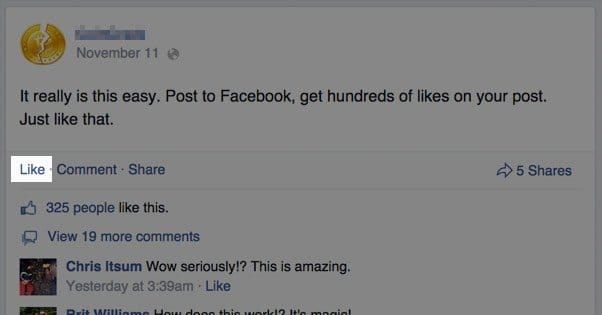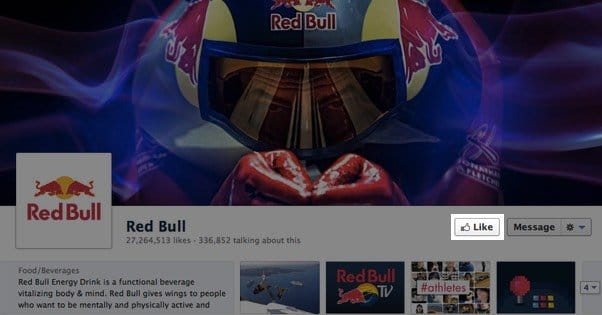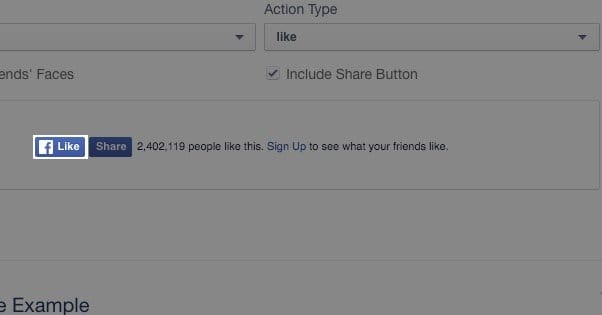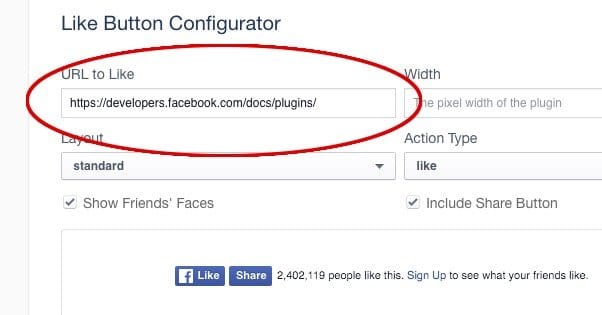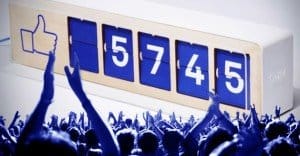 Written by ContentPowered.com
Written by ContentPowered.com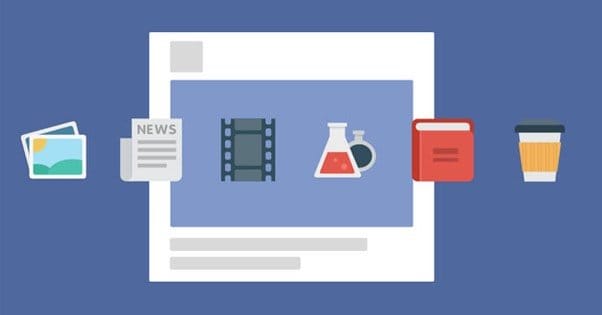
Facebook has likes as an action for a whole lot of different scenarios. On the site, you can like a post, or you can like a page. You can even add other emotions now, like Wow or Sad – a pithy emoticon-based way of sharing feelings so you don’t have to learn to express them with words or actions. Putting that aside, though, you also have likes originating from a website like button.
There is a functional difference in the way all three of these likes work, and it’s one that many people don’t intuitively grasp. This is why people who buy likes targeting their website like button are confused when their page doesn’t grow. Let’s take a look at each of the likes and see how they function.
Post Likes
Post likes – and wows, and sads, and angrys, and loves – are reactions to a post that allow a user to engage with a post and express something to the poster, without having to actually leave a comment. Likes are mostly used as a way to acknowledge a post, without having to say you do, or come up with something else to say in addition to that acknowledgement. It’s roughly analogous to some millennials typing “lol” or “heh” in an instant message, if you’re familiar with those; it’s a way for the person receiving the message to acknowledge that they saw it and say, at the same time, that they have nothing of value to add to that train of thought.
Post likes have a minor sharing effect. They create a “Person A has liked X post” story that is shared in the feeds of the people who are friends with person A. Facebook recognized that these stories were largely ignored, though, and has been minimizing how many of them show up. These days they tend to only show up for posts about trending topics.
The major problem with these stories is that it’s often hard for the friends of person A to respond to the story. If post X was made by person B, and person B has privacy settings that don’t allow contributions from non-friends, the friends of person A won’t be able to comment.
That’s a little confusing, so let’s break it down. If Bob makes a post and has his privacy settings set in such a way that their posts are public but only friends can comment on them, it will be visible to anyone. Janet likes Bob’s post, which creates a “Janet liked Bob’s Post” story in the news feed of Bartleby. Bartleby wants to comment, but can’t, because he isn’t a friend of Bob. He can see the post, but he can’t engage with it.
This is made worse when it’s a comment, rather than a like, that generates the story. Facebook is very bad at showing comments in an intuitive way. If Bob was actually the New York Times, and if Janet left a comment rather than a like, the story will still be generated for Bartleby. The problem is, Janet’s comment might be one out of 1,500. If Bartleby wants to see what Janet said, he has to dig and dig and hope he finds it. Facebook doesn’t just show that comment. It’s frankly quite obnoxious, and makes the “X has liked/commented on Y post” stories virtually useless.
So, that’s all having to do with likes on a specific post. There are two other kinds of likes, though.
Page Likes
A page like is roughly equivalent to a follow on Twitter. When Bob has a Facebook Page rather than a profile, that page works like a business page. It can accumulate followers, it can run ads, it’s limited in direct messaging, and all the other features and limitations of a page.
When you go to a page and like it, you’re subscribing to updates from that page in your news feed. This, too, can generate “Janet has liked Bob’s page” stories in Bartleby’s feed, but in this case there’s nothing limiting Bartleby from viewing Bob’s page in its entirety. Pages don’t have “followers only” settings anymore, not since Facebook removed like gating.
Liking a page doesn’t really grant you access to anything special on Facebook as the liker. You get the page’s posts in your feed according to EdgeRank, which might mean you don’t see much at all. The more you engage with a page, the more of their posts you see. The more you ignore the page, the less you see.
Liking a page does have benefits for that page, though. From the page perspective, they can now see some information about you. Your demographics are added to their audience demographics. You show up in reach calculations. If they want to run advertisements to the people who follow them and no one else, you show up as a target for those ads. The page can’t message you unless you message them first, but they are free to respond.
Page likes are what you, as a page manager and website owner, want to gather in as large a quantity as possible. Post likes don’t do a lot, because, as we mentioned, the stories aren’t generated very frequently and they don’t do much for you. Shares are better, comments are better, likes are generic filler. It’s a bad thing to have no likes on a page that has a high number of followers, but that’s more because likes are a sign that your followers are active and real, rather than fakes purchased through a bot reseller.
The reason you want page likes is primarily because of the advertising information. Demographics targeting comes in handy quite frequently, both for actual advertising and for insight into your website audience for organic targeting. If you’re not actively using Facebook yourself, though, page likes don’t matter to you.
So what about the third type of likes?
Website Like Button Likes
This third type of like comes from social media buttons embedded on your website. When you see a Facebook like button on a blog, you’re seeing something that is, itself, a lie.
What do I mean by that? Well, if you were to click the like button next to a blog post, you would find out that it’s not actually liking anything. You’re actually sharing this post with your feed. You’ll see a URL, if you inspect the element, that looks something like this:
- www.facebook.com/sharer.php?u=www.example.com
This is a Facebook URL with a script and a parameter. The parameter is the example.com URL, which would be the URL of the blog post you’re “liking.” The script is the sharer.php, which is the same as what you see on Facebook when you click “share” on a post.
In other words, there’s no actual “like” going on with the like button. It’s a share, which posts the URL to your Facebook feed so your friends can see it. The appearance of the shared post depends on the open graph meta data of the page you’re sharing, though you can customize it by adding your own post to the top of the link you’re sharing.
You can, when you click a Facebook share link or like button like this, change some settings. You can choose to share it publicly or just with friends, or even just with yourself if you’re using an in-app share that you don’t want your friends to see. You can add emotions, tag friends, or add a geolocation to the shared post as well. You can even specifically just share it with friends via a message, if that’s what you want to do.
The point is, as a user, you’re not liking a page when you click a like button. The one and only exception to this is when the page is using the Facebook like box, which has a feed of recent posts and a display of profile pictures of random followers. This is an iframe that has an actual “like this page” button embedded in it. Clicking that like button will be a page like action, rather than a post share button.
Using Website Likes
One novice mistake I see marketers making all the time is not customizing the sharing button on their site. They want to see higher numbers, so they make every social sharing button for Facebook link to their homepage. That means every accumulated share from every instance of the button on their site will display the same number, which is the number of shares the homepage of the website has.
For example, if you were to implement that system on Amazon, every social sharing button on Amazon would have a number next to it equal to the number of times “www.amazon.com” as a URL has been shared on Facebook. How many is that? Your guess is as good as mine.
It would not be the number of page likes Amazon has – 26.6 million or so – because that’s not the action the like button takes. So not only will the number of shares not match the number of page likes the page has, that discrepancy looks bad if a user notices.
The real way you should use Facebook website like buttons is to use the default for most social sharing buttons, which is “share the page this button is currently on.” Each individual blog post will get shared on its own, and will accumulate shares that are made of that post, but not of the website in general. There is, unfortunately, no good way to total up all the shares of all the pages on your site without some kind of custom script pulling data from the Facebook API.
I don’t like to use Facebook sharing buttons on pages other than content or product pages. Blog posts should have a sharing button. Product pages should have a sharing button. Landing pages may or may not want a sharing button, depending on how much laser focus the landing page needs.
There are two tricks you can do with other pages on your site. By “other” pages, here, I mean pages like your homepage, your about page, your contact page, an FAQ, and the like.
- The first trick is to ignore the like button or social sharing buttons on those page, and instead just embed the Facebook like box. This strategy works because of the kinds of people who are on those pages of your site. They aren’t sharing them because they want the URL on their feed, they’re liking them because they think the like button is going to make them like the page on Facebook. By limiting them to just the like box, the only like-related action they can take is actually liking the page, which is what they wanted to do in the first place.
- The second trick would be to actually include the like button, but customize it. Rather than have it share as a post the page the user is currently on, customize the sharing URL to be a landing page. That landing page will be specifically designed to be shared on Facebook and will be designed such that users coming in from that link – new users clicking due to their friends sharing the page – will be squeezed into following, liking, or otherwise engaging with and reading your site.
This second method only works if you’re using a like button you can customize on a per-page basis. A lot of plugins are automatic; if they’re on a page, they share that page, nothing else. If you tried to change it, it would change the URL to the landing page for every share made through the site, which is bringing us right back to that initial problem. I recommend using a plugin for your blog posts and product pages, but using a default like script from Facebook with a custom URL on those other pages. You can do that here.
Of course, all of this only works and is only valuable so long as you have an active Facebook presence. If you’re not on Facebook for one reason or another – your URL is filtered, your account is banned, you chose not to use the site, or you didn’t get enough value to make it worth the time – you’re not going to get a lot of use out of either sharing or like buttons. You can still use them, of course – just because you’re on Facebook doesn’t mean your followers aren’t – but you’re not going to be able to use the like box and similar page-reliant code.
